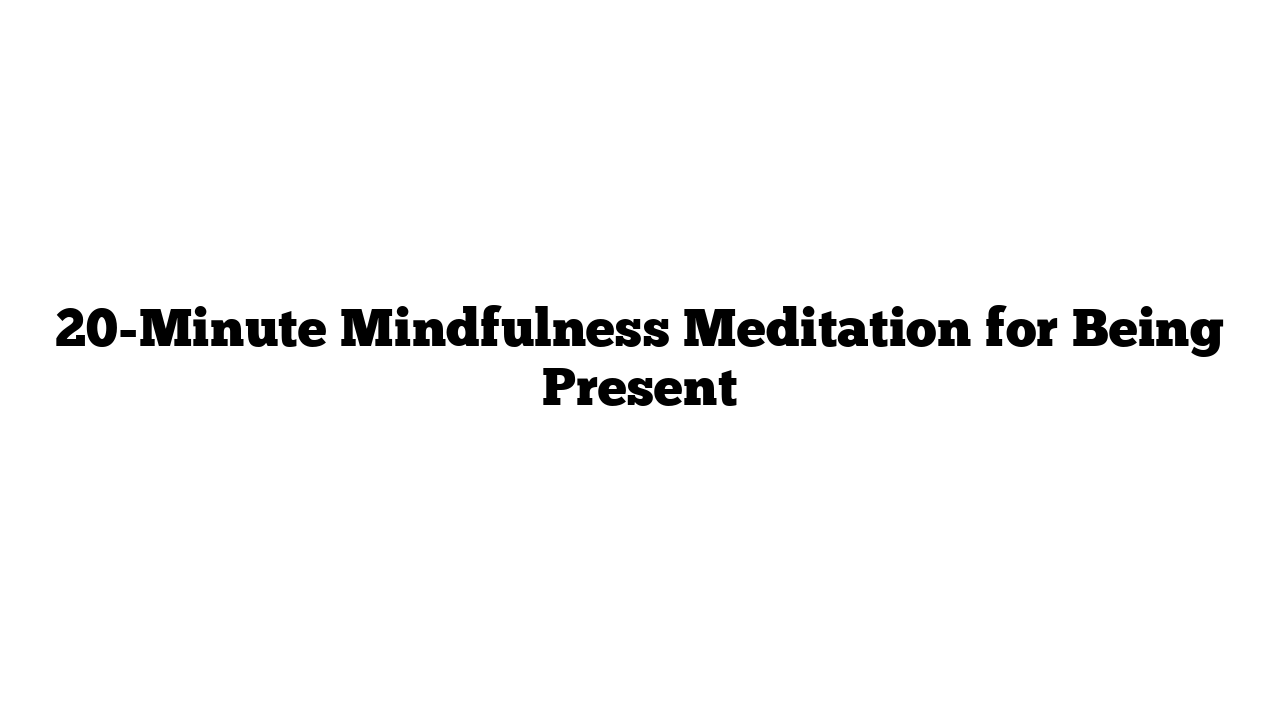In our busy lives, it’s easy to feel overwhelmed and distracted. Practicing mindfulness can help us become more aware of the present moment, allowing us to experience life more fully. This 20-minute mindfulness meditation will guide you through a simple and effective way to connect with yourself and the world around you.
Why Mindfulness Matters
Mindfulness is all about paying attention to the present without judgment. When we practice mindfulness, we can reduce stress, improve focus, and enhance our overall well-being. It helps us to be more aware of our thoughts and feelings, making it easier to manage them.
Preparing for Meditation
Before you start, find a quiet and comfortable space where you won’t be disturbed. You can sit on a chair, cushion, or the floor—whatever feels best for you. Make sure your body is supported, and your back is straight. You can close your eyes or lower your gaze to help reduce distractions.
Begin the Practice
- Set an Intention: Take a moment to set an intention for your practice. This could be something simple, like “I want to be present” or “I wish to find calm.”
- Focus on Your Breath: Start by taking a few deep breaths. Inhale deeply through your nose, allowing your belly to rise. Then exhale gently through your mouth. Notice how your body feels as you breathe.
- Feel the Ground: Bring your awareness to the contact points between your body and the ground. Feel the weight of your body and the support it provides. This connection can help ground you in the present moment.
Embrace Your Thoughts and Feelings
As you settle into your breath, thoughts and feelings may arise. This is perfectly normal! Instead of trying to push them away, acknowledge them. You might think, “I notice I’m feeling anxious” or “I see that thought about my to-do list.” Recognizing these feelings without judgment can create a sense of acceptance.
Body Scan
Now, let’s do a quick body scan:
- Start from the Top: Focus on the top of your head. Notice any sensations.
- Move Down: Gradually move your attention down your body—your forehead, cheeks, neck, shoulders, arms, and so on.
- Pause at Each Part: Take a moment to feel what each part is experiencing. Are there areas of tension? Just notice and breathe into those areas.
Bring Awareness Back to Your Breath
After the body scan, gently return your focus to your breath. Notice the rise and fall of your chest or belly. If your mind wanders, that’s okay! Simply guide it back to your breath.
Cultivating Gratitude
As you continue to breathe, think of something you are grateful for in this moment. It could be something as simple as the air you breathe or the warmth of the sun. Allow this feeling of gratitude to fill your heart and mind.
Gradually Return
As you near the end of your meditation, gently bring your awareness back to the space around you. Wiggle your fingers and toes, and take a few more deep breaths. When you feel ready, slowly open your eyes.
Reflect on Your Experience
Take a moment to reflect on how you feel now compared to when you began. Did anything shift for you?
Make It a Habit
You can practice this mindfulness meditation anytime—morning, noon, or night. Try to set aside 20 minutes each day to connect with yourself and the present moment. The more you practice, the easier it becomes to stay mindful in your daily life.
Closing Thoughts
Mindfulness meditation is a beautiful way to nurture your mind and body. By taking just 20 minutes each day, you can create a deeper connection with yourself and the world around you. Remember, it’s perfectly normal to have thoughts and feelings arise during meditation. Embrace them with kindness and curiosity.
Now, go ahead and find a quiet space to practice. Your journey toward mindfulness begins now!
